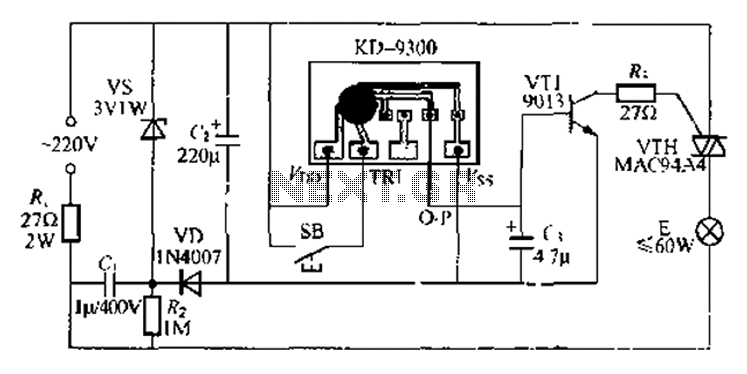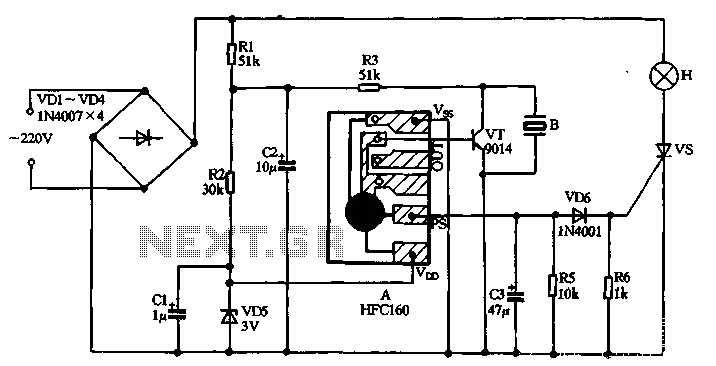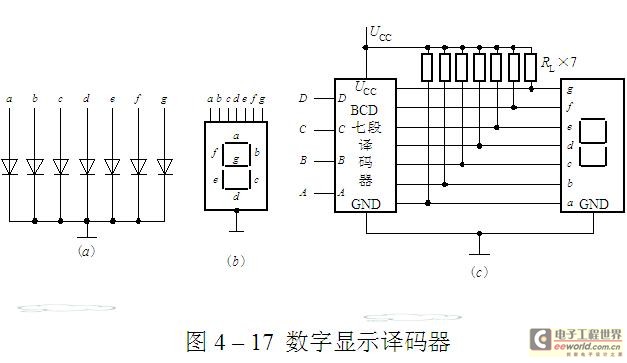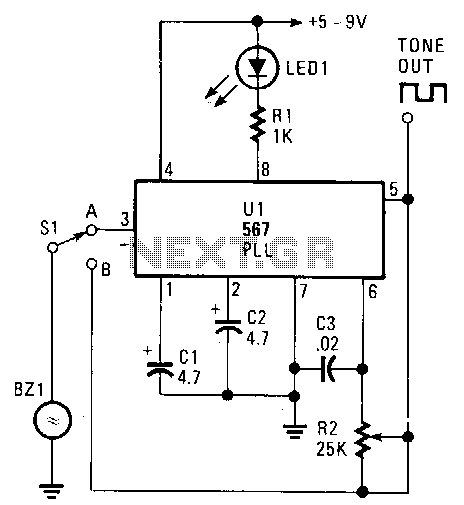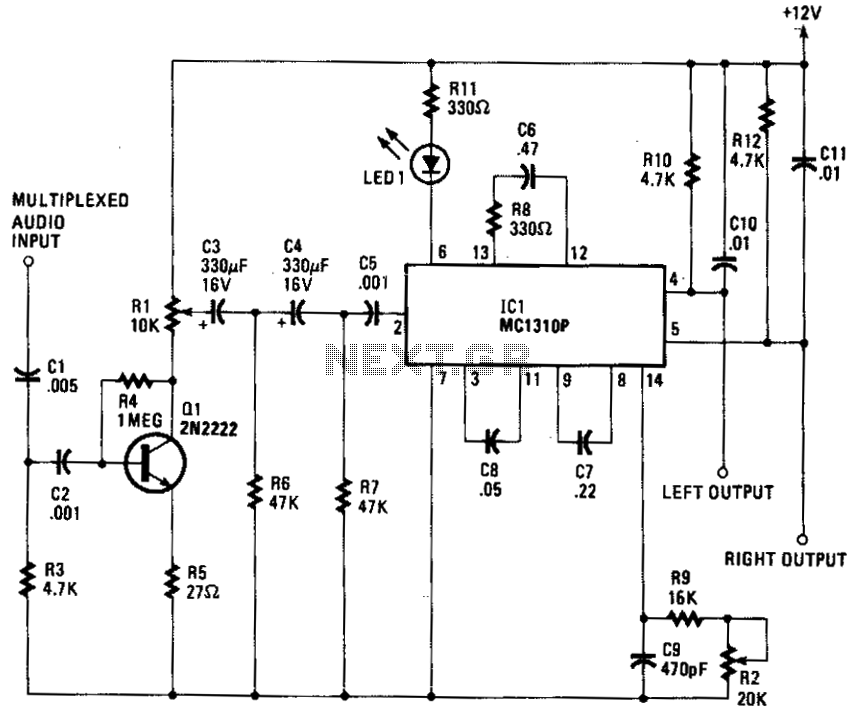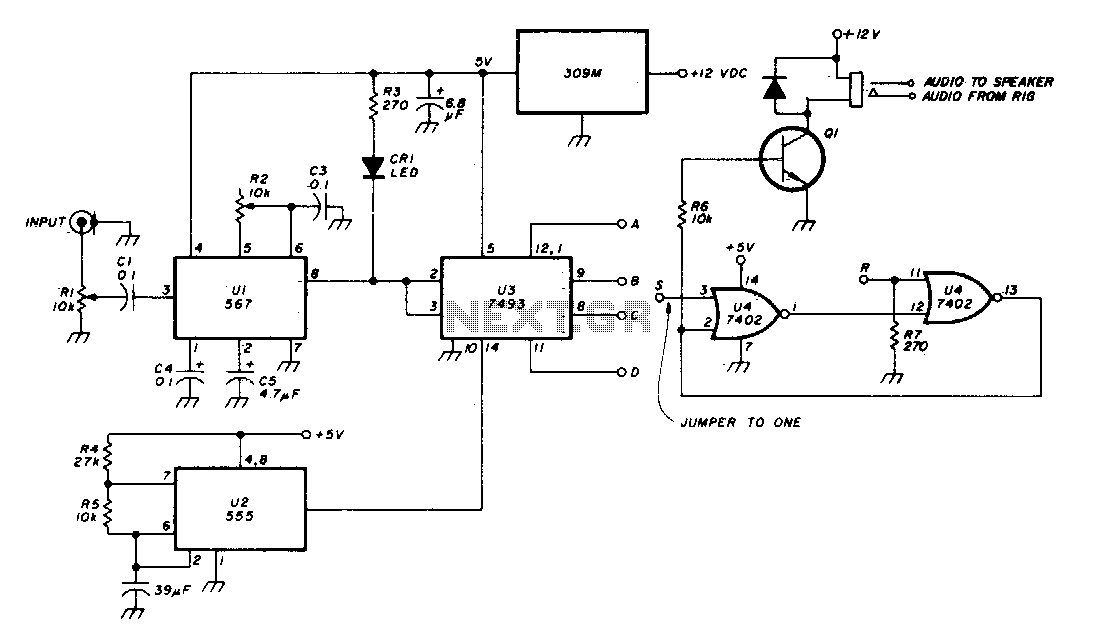
Background music decoder
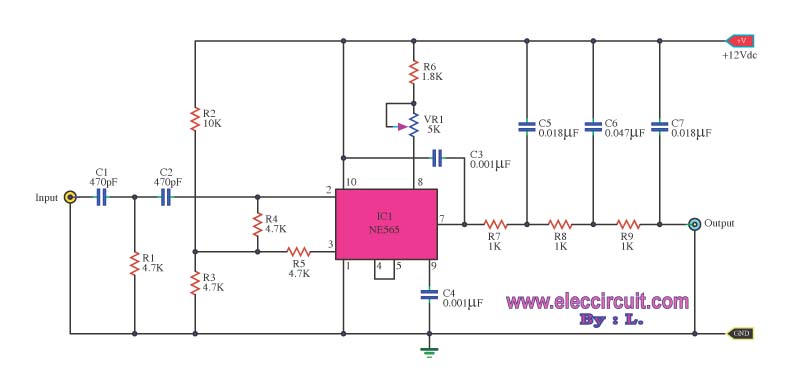
This circuit is a background music (SCA) decoder designed to process an input demodulated (multiplex) FM signal. The NE565, a Phase Locked Loop (PLL) integrated circuit, serves as the foundation for this design.
The background music (SCA) decoder circuit utilizes the NE565 PLL IC to effectively demodulate and decode the subcarrier audio signals embedded within a multiplexed FM broadcast. The NE565 is capable of locking onto the frequency of the SCA signal, which typically operates at a frequency of 67 kHz, allowing for the extraction of the audio content.
The circuit configuration includes the necessary components to filter and amplify the input FM signal before it reaches the NE565. This may involve the use of RF amplifiers and bandpass filters to ensure that the desired frequency range is isolated while minimizing noise and interference. The output of the NE565 is then processed through additional audio filters to remove any residual carrier frequencies and enhance the quality of the decoded audio signal.
Power supply considerations are also critical in this design, with appropriate voltage regulation and decoupling capacitors included to ensure stable operation of the NE565 and prevent power supply noise from affecting the performance of the circuit. The output can be connected to audio amplification systems or directly to speakers, depending on the application requirements.
Overall, this background music decoder circuit effectively utilizes the NE565 PLL IC to achieve reliable demodulation of SCA signals, providing a clear and high-quality audio output suitable for various applications in broadcasting and audio distribution.This is a background music (SCA) decoder circuit from the input demodulated (multiplex) FM signal. We use NE565 (Phase Locked Loop IC) to be base of this.. 🔗 External reference
The background music (SCA) decoder circuit utilizes the NE565 PLL IC to effectively demodulate and decode the subcarrier audio signals embedded within a multiplexed FM broadcast. The NE565 is capable of locking onto the frequency of the SCA signal, which typically operates at a frequency of 67 kHz, allowing for the extraction of the audio content.
The circuit configuration includes the necessary components to filter and amplify the input FM signal before it reaches the NE565. This may involve the use of RF amplifiers and bandpass filters to ensure that the desired frequency range is isolated while minimizing noise and interference. The output of the NE565 is then processed through additional audio filters to remove any residual carrier frequencies and enhance the quality of the decoded audio signal.
Power supply considerations are also critical in this design, with appropriate voltage regulation and decoupling capacitors included to ensure stable operation of the NE565 and prevent power supply noise from affecting the performance of the circuit. The output can be connected to audio amplification systems or directly to speakers, depending on the application requirements.
Overall, this background music decoder circuit effectively utilizes the NE565 PLL IC to achieve reliable demodulation of SCA signals, providing a clear and high-quality audio output suitable for various applications in broadcasting and audio distribution.This is a background music (SCA) decoder circuit from the input demodulated (multiplex) FM signal. We use NE565 (Phase Locked Loop IC) to be base of this.. 🔗 External reference
